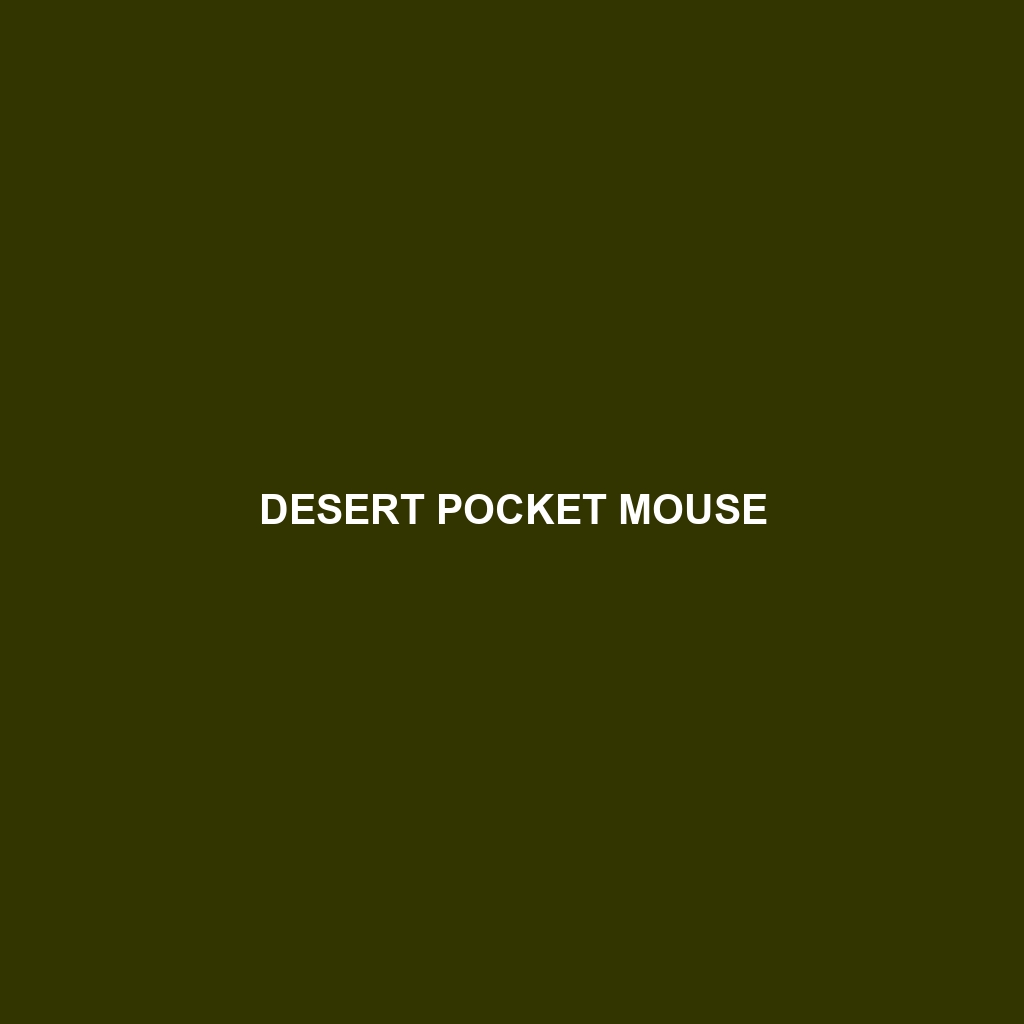Desert Pocket Mouse: A Detailed Overview
Common Name: Desert Pocket Mouse
Scientific Name: Chaetodipus penicillatus
Habitat
The Desert Pocket Mouse is primarily found in arid and semi-arid regions across the southwestern United States and northern Mexico. This species thrives in environments such as deserts, sandy plains, and scrublands, where it can burrow and find shelter from harsh sun exposure. Typical locales include the Sonoran and Mojave Deserts, where the delicate balance of heat and moisture supports its lifestyle.
Physical Characteristics
The Desert Pocket Mouse measures approximately 8 to 10 inches in length, including its long tail. Its fur is typically a sandy or light brown color, allowing it to blend into its desert surroundings. Distinctive features include large, rounded ears that enhance its hearing and help dissipate heat. The mouse’s sharp incisors are notable for their ability to crack open tough seeds, a vital adaptation for its diet.
Behavior
Desert Pocket Mice are primarily nocturnal, exhibiting behaviors that allow them to conserve moisture and avoid extreme daytime temperatures. They are adept diggers, using their strong hind legs to create elaborate burrow systems that provide shelter and store food. Socially, these mice are seen as solitary, although they occasionally share burrows with other pocket mice during colder months.
Diet
The diet of the Desert Pocket Mouse primarily consists of seeds, fruits, and plant material. They have a specialized feeding habit that includes foraging during the cooler evening hours. Common food sources are grasses, herbs, and forbs, which provide essential nutrients to sustain their energetic lifestyle. Their ability to store food in burrows is crucial for survival during dry seasons.
Reproduction
Reproductive activities of the Desert Pocket Mouse typically occur in the spring and summer months. The breeding season peaks when food is abundant, and females can have multiple litters each year. A litter usually consists of 2 to 6 offspring, which are born blind and hairless. Maternal care is significant, and juveniles are weaned after approximately 21 days.
Conservation Status
Currently, the Desert Pocket Mouse is classified as a species of Least Concern by the IUCN Red List. However, habitat loss and climate change pose potential threats to its populations. Preservation of desert ecosystems is vital for maintaining the survival of this unique species.
Interesting Facts
The Desert Pocket Mouse can survive without drinking water, deriving necessary moisture from the seeds and plants it consumes. Their impressive ability to adapt to extreme desert conditions showcases their resilience and evolutionary success.
Role in Ecosystem
The Desert Pocket Mouse plays a critical role in its ecosystem, acting as both a seed disperser and a prey species for various predators, including owls and snakes. By facilitating plant propagation through seed dispersal, it helps maintain biodiversity within desert habitats. Additionally, their burrowing behaviors aerate the soil, promoting healthy plant growth.
